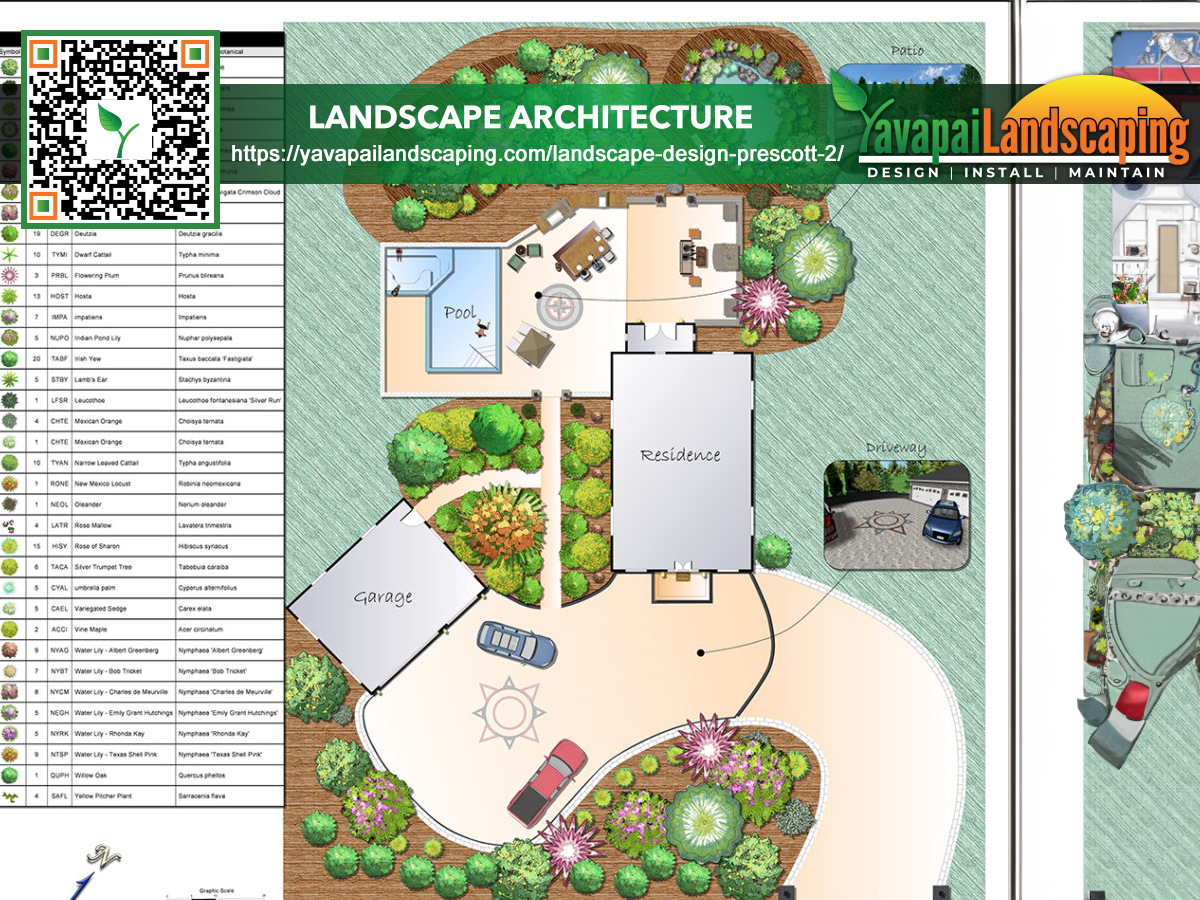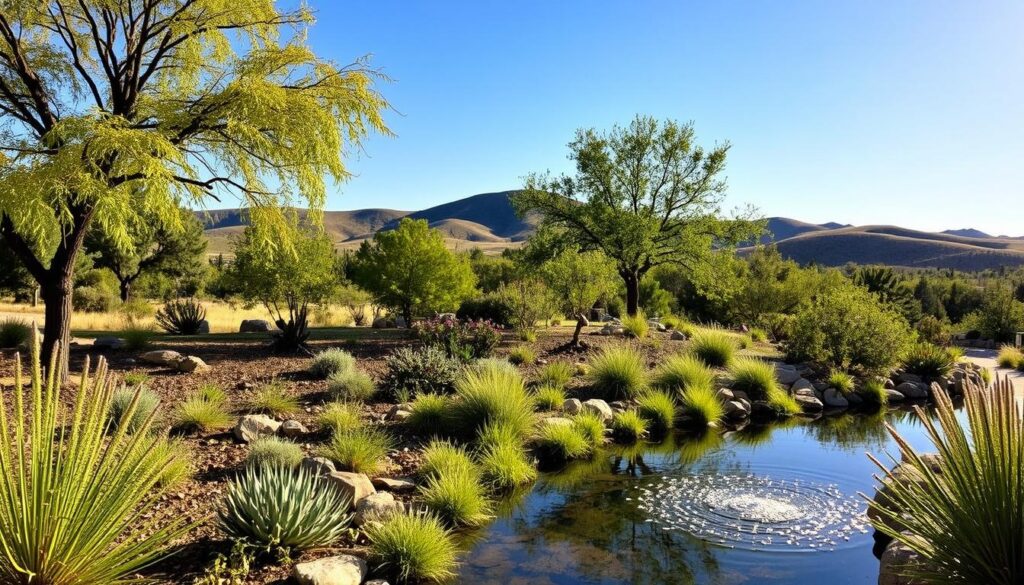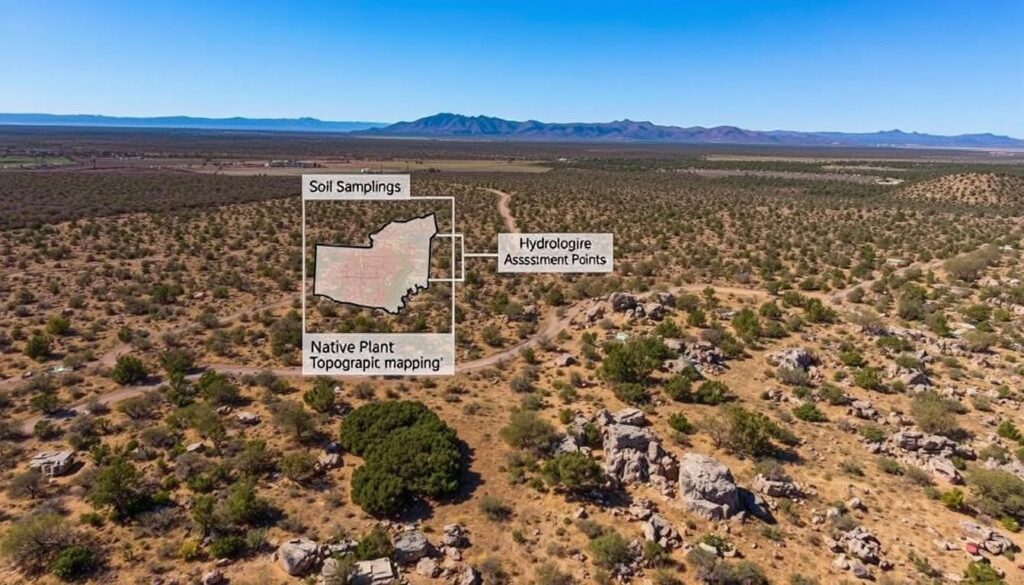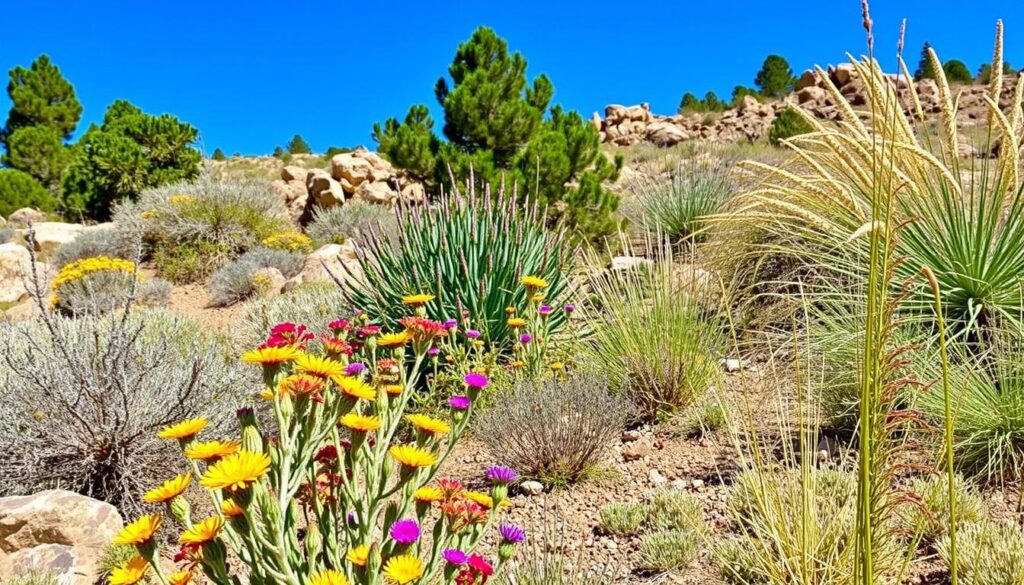
Landscape restoration in Prescott, Arizona, needs a special approach. The city’s unique environment requires careful planning and assessment in landscape architecture projects. Prescott’s rugged terrain and arid climate present both challenges and opportunities for restoration.
Effective landscape restoration starts with a detailed environmental assessment. This involves studying native plants, soil conditions, and local ecosystems. By understanding these, architects can design sustainable landscapes that flourish in Prescott’s climate.
Successful projects mix modern landscape architecture with respect for the area’s natural heritage. This balance makes restored landscapes beautiful and beneficial for local wildlife and water conservation.
Key Takeaways
- Assess Prescott’s unique environment before planning
- Incorporate native plants for sustainable design
- Consider local climate patterns in restoration projects
- Focus on water conservation techniques
- Blend modern architecture with natural landscape
- Support local ecosystems through thoughtful design

Understanding Prescott’s Unique Environmental Characteristics
The Prescott ecosystem is full of natural wonders. It has a mix of plants and climates that make it special. These features are important to think about when we restore landscapes here.
Native Flora and Fauna of Northern Arizona
Prescott is known for its beautiful plants. Ponderosa pines grow high up, and pinyon-juniper woodlands are found lower down. Thanks to the varied habitats, animals like mule deer, javelinas, and birds live here.
Local Climate Patterns and Microclimates
Prescott’s climate is different from Arizona’s desert. It has four seasons, with warm summers and cool winters. The area’s shape and height create different climates, perfect for different plants.
Soil Composition and Drainage Patterns
The soil in Prescott varies from sandy to clay. Each type affects how plants grow. The land’s shape also changes how water flows, which is key for restoring landscapes. Uncover the brilliance of this article by giving it a read.
Site Analysis Techniques for Landscape Restoration Planning

Effective landscape restoration in Prescott begins with a detailed site assessment. This step involves examining the current state closely and identifying areas for improvement. A deep landscape evaluation leads to plans that perfectly fit the local ecosystem.
Topography analysis is a vital part of site assessment. It examines the land’s physical features, such as slopes, elevations, and water flow. Knowing these details helps in designing plans that blend with the natural landscape.
Environmental impact assessments are key in planning landscape restoration. They look at how changes might affect plants, animals, and ecosystems. Landscape architects can make plans that reduce harm and boost biodiversity.
- Survey existing vegetation
- Analyze soil composition
- Assess water resources
- Identify areas prone to erosion
Using these site analysis methods, landscape architects can make plans that improve Prescott’s landscapes and help the local ecosystem. This method ensures restoration efforts match Northern Arizona’s unique environment.
Native Plant Selection and Integration Strategies
Choosing the right plants is crucial for a successful landscape in Prescott. Arizona native plants are beautiful and resilient in our climate. Let’s examine how to pick and blend these plants well.
Drought-Resistant Species Selection
Xeriscaping is wise in Prescott’s dry weather. Opt for Arizona native plants like:
- Penstemon
- Agave
- Desert Marigold
- Yucca

Plant Community Design
Creating balanced plant communities is like nature’s harmony. Group plants with similar needs together. This boosts biodiversity and cuts down on care.
Mix groundcovers, shrubs, and trees for a natural, layered look.
Seasonal Adaptation Considerations
Prescott’s climate changes with the seasons. For interest throughout the year, choose plants that handle summer heat and winter cold. Also, choose plants that bloom at different times.
Native grasses like Blue Grama add texture and movement in every season.
Using these strategies, you can create a stunning, sustainable landscape in Prescott. Your yard will showcase Arizona’s natural beauty and support local ecosystems.
Sustainable Water Management Solutions
In Prescott’s dry climate, using water wisely is crucial for landscape restoration. Efficient irrigation systems are key to saving water. They deliver water directly to plant roots, reducing waste.
Drip irrigation and smart controllers help save water while keeping plants healthy. This approach is essential for water conservation.
Rainwater harvesting is another effective way to save water. It involves collecting rainwater from roofs and other surfaces for later use. This method reduces reliance on city water and helps plants grow with natural rainfall.
Greywater reuse is also becoming popular in Prescott. It uses lightly used water from sinks or washing machines to water plants. With proper filtration, greywater can safely nourish landscapes while saving water.
By using these water-smart techniques, Prescott’s landscape architects can create beautiful, restored spaces. These methods save water and help create resilient landscapes that thrive in Arizona’s unique climate.
Yavapai Landscaping Prescott offers free quotations for landscaping and tree services in Prescott and its nearby localities. These include tree removal, trimming, stump grinding, land clearance, storm clean-up, and emergency tree service.
